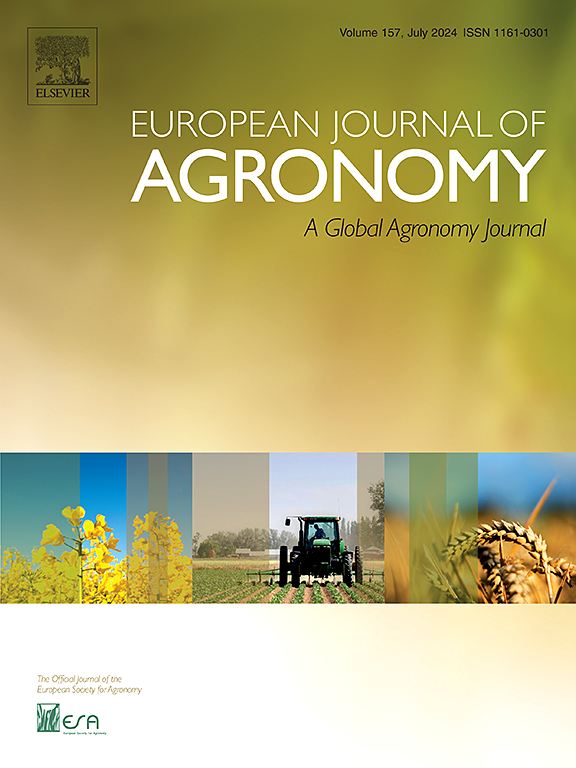在巴西南部免耕轮作中,带状施钾提高了钾肥的农艺和经济效益
IF 4.5
1区 农林科学
Q1 AGRONOMY
引用次数: 0
摘要
免耕条件下砂质粘土壤土钾肥管理策略的有效性对实现经济上可行的产量至关重要。本研究比较了NT条件下亚热带阿克立醇带状施钾与撒播施钾的农艺和经济效益。2019-2023年,在玉米或大豆春夏播种期间,采用带状施钾和撒播施钾5种施钾量(0、50、100、150和200 kg ha−1)。施钾对粮食作物产量无显著影响。这导致了经济损失,并显著增加了表层土壤的有效钾水平,阻碍了利用该土层诊断钾有效性和对钾肥反应的可能性。配施时的最佳农艺经济钾用量与产量钾用量相匹配。与撒播相比,施用50 kg ha - 1钾可使部分要素生产率提高20 %,农艺效率提高300 %,施钾经济效益提高680 %,价值成本比提高100 %。即使有效钾在0 ~ 10 cm土层高于临界水平,也应在种沟中带状施用低钾肥。本文章由计算机程序翻译,如有差异,请以英文原文为准。
Band applied K increases agronomic and economic efficiency of K fertilization in a crop rotation under no-till in southern Brazil
The effectiveness of potassium (K) fertilizer management strategies on sandy clay loam soils under no-till (NT) is essential to achieving economically viable yields. This study compared the agronomic and economic efficiency of K fertilization using band application versus broadcast distribution on a subtropical Acrisol under NT. From 2019–2023, five K rates (0, 50, 100, 150, and 200 kg ha−1) were applied annually using band and broadcast methods during spring/summer at corn or soybean sowing. There was no increase in grain crop yield with K broadcast application. This resulted in economic loss and significantly increased the available K levels in the topsoil, hampering the use of this soil layer to diagnose K availability and the likelihood of response to K fertilizers. The optimum agronomic and economic K rate matched the output K rate when the fertilizer was banded. The application of 50 kg ha−1 of K increased 20 % the partial factor productivity, 300 % the agronomy efficiency, 680 % the economic profit from applied K, and 100 % the value cost ratio compared to the broadcast application. Even with available K above the critical level in the soil of the 0–10 cm layer, low rates of K fertilizers should be applied banded in the seed furrow.
求助全文
通过发布文献求助,成功后即可免费获取论文全文。
去求助
来源期刊

European Journal of Agronomy
农林科学-农艺学
CiteScore
8.30
自引率
7.70%
发文量
187
审稿时长
4.5 months
期刊介绍:
The European Journal of Agronomy, the official journal of the European Society for Agronomy, publishes original research papers reporting experimental and theoretical contributions to field-based agronomy and crop science. The journal will consider research at the field level for agricultural, horticultural and tree crops, that uses comprehensive and explanatory approaches. The EJA covers the following topics:
crop physiology
crop production and management including irrigation, fertilization and soil management
agroclimatology and modelling
plant-soil relationships
crop quality and post-harvest physiology
farming and cropping systems
agroecosystems and the environment
crop-weed interactions and management
organic farming
horticultural crops
papers from the European Society for Agronomy bi-annual meetings
In determining the suitability of submitted articles for publication, particular scrutiny is placed on the degree of novelty and significance of the research and the extent to which it adds to existing knowledge in agronomy.
 求助内容:
求助内容: 应助结果提醒方式:
应助结果提醒方式:


